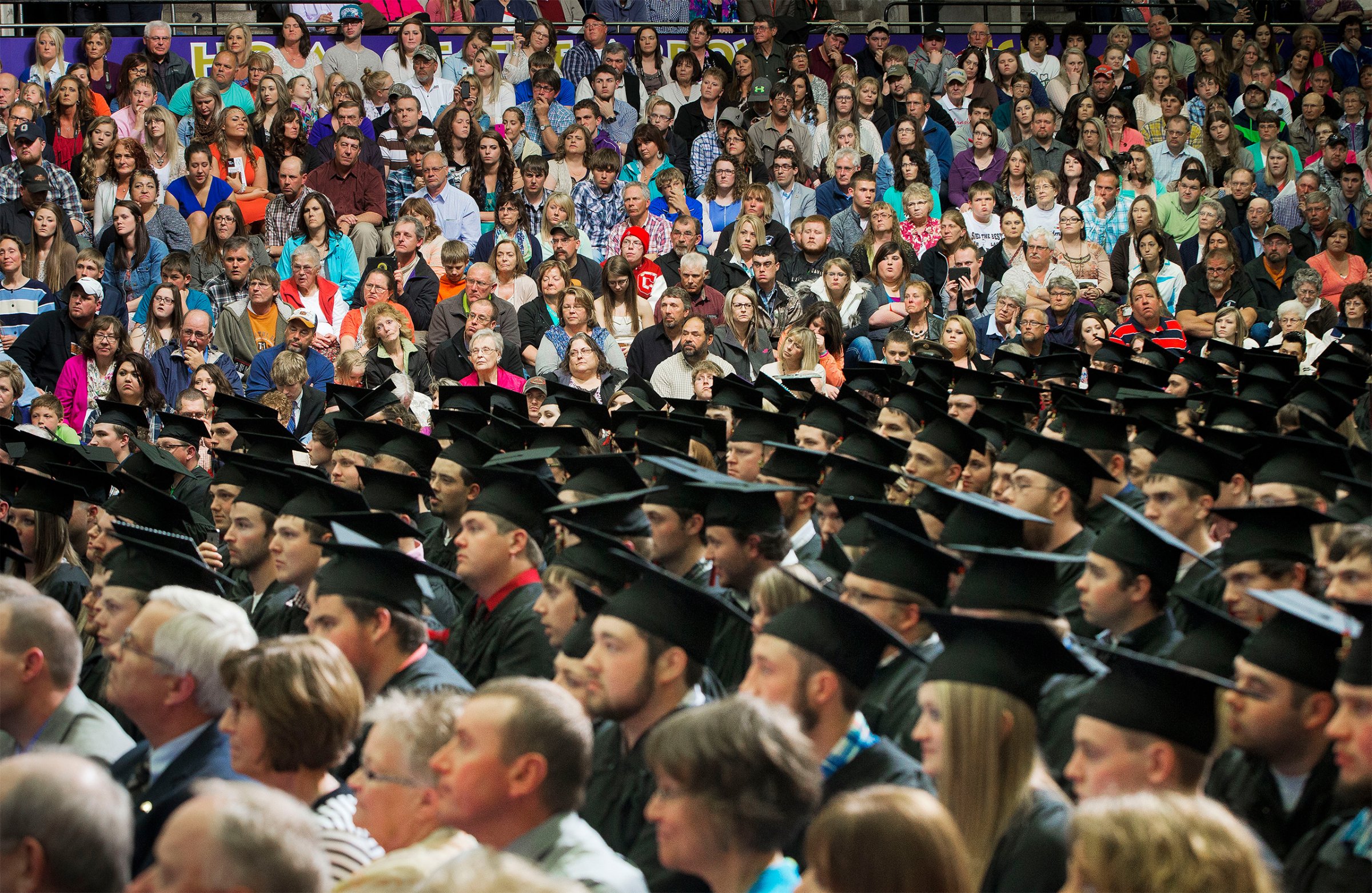
In tiny Watertown, South Dakota — in the middle of America — one community college is doing the unthinkable. Six months after graduation, 99% of students from Lake Area Technical Institute (LATI) are employed or continuing their education. After five years, graduates earn wages higher than average for all other workers in the region. Seventy-four percent of students at Lake Area graduate or transfer to a four-year college within three years — compared to fewer than 40% for community college students nationally.
This small community college’s success should capture our attention. It should become a model for what higher education at its best can be all across America, where, since the end of the recession, 95% of jobs have gone to workers with at least some college education. Those with a high-school diploma or less are increasingly left behind.
Beyond creating clear academic pathways for students, setting learning goals and measuring progress, increasing access and support for minority and low-income students, and building a culture where student success is everyone’s business, there’s another crucial thing that defines the best community colleges: They partner with businesses to make sure that what students learn has value on the job. One of the main reasons LATI does so well in preparing students for careers is that regional employers know they can rely on LATI for talent, so employers themselves put skin in the game.
These businesses provide internships and expensive equipment: airplanes for aviation students, robots for manufacturing students, a cadaver lab for nursing students and a remote weather station for agricultural students. At times, they subsidize faculty salaries to get the best people in front of the classroom. They stay in touch with professors monthly or even weekly to make sure students learn the most up-to-date skills.
LATI and other colleges are excelling not just because of what happens inside their doors. They’re excelling because business partners have invested heavily in their success.
At Florida’s Indian River State College, employers have helped the college build innovative and up-to-the-minute workforce programs. Nursing and EMT students practice real-world scenarios in a simulated hospital ward on campus, and dental hygiene students work with dentists to treat patients in an on-site dental clinic. College leaders and public officials developed a sophisticated public safety complex, where students practice testimony in a mock courtroom, incarceration procedures in jail cells and emergency response techniques in outdoor buildings destroyed by simulated disasters. Industry partners have also helped the college build employability training into its curriculum so that students graduate not just with technical knowledge but also the soft skills required to excel.
What do employers get in return for these deep investments? A steady stream of great hires — which is no small thing at a time when U.S. companies in many sectors express difficulty finding skilled workers.
Colleges must also do their part to ensure that industry partnerships make sense. Given the rapid changes in the labor market, leaders at excellent colleges regularly review workforce projections to ensure they are offering the right number of seats in the right programs and courses. They aren’t afraid to get rid of programs that don’t lead to family-sustaining wages, even if employers want them. And they work with high schools and four-year colleges to build career pathways that make sense.
With 1,100 community colleges across America, it’s safe to say that every U.S. employer has one nearby. For our nation’s six million community college students — as well as our national economy — to reach their full potential, employers and community colleges must work together to provide the talent needed to expand opportunity and expand our economy.
More Must-Reads From TIME
- The 100 Most Influential People of 2024
- Coco Gauff Is Playing for Herself Now
- Scenes From Pro-Palestinian Encampments Across U.S. Universities
- 6 Compliments That Land Every Time
- If You're Dating Right Now , You're Brave: Column
- The AI That Could Heal a Divided Internet
- Fallout Is a Brilliant Model for the Future of Video Game Adaptations
- Want Weekly Recs on What to Watch, Read, and More? Sign Up for Worth Your Time
Contact us at letters@time.com